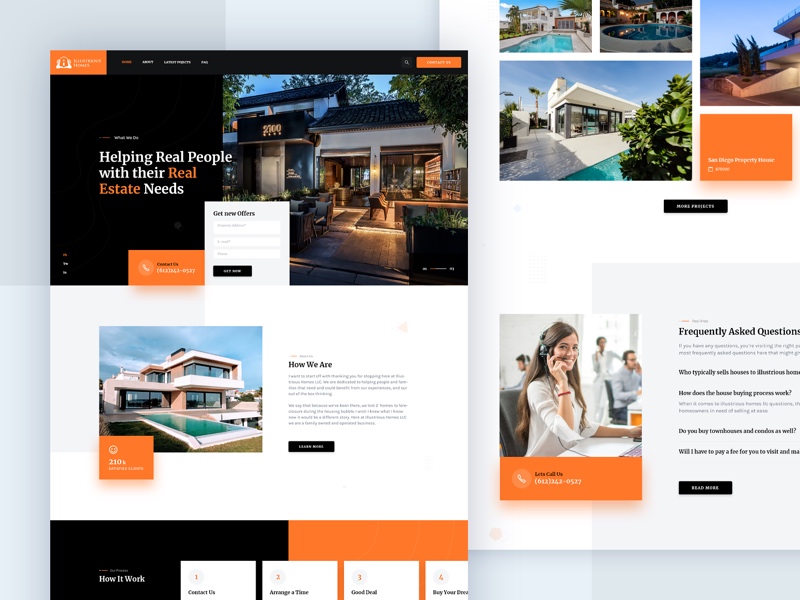
Website design can be overwhelming before you know much about it. You may be wondering how to create a unique design. What issues do you face with the code? The following article will guide you in producing highly effective and valuable websites.
Consider having your website use fixed-position navigation. This will make sure the navigation panel is locked in place as your readers move throughout the site. This isn’t only very convenient for your visitors, but is also great for marketers.
When you design a site, pull it up in various browsers. Your content may show very differently to customers using alternate browsers. Make sure to research the browsers available. You will also want to send your site to someone that’s using a different operating system so you can see that their browser is compatible with yours.
Smaller pages are better. If your site takes awhile to load, your visitors will lose interest. If your viewers are sitting waiting for the site to load, they may just go elsewhere to find what they need.
Keep your homepage simple. Most people will decide whether or not to stay on your site just by looking at this page. Make sure that you provide a very clear description about your business or other purpose for your site. Other information on your site should also be minimal, but still clear, so that you don’t overwhelm your visitors.
Research your keywords. While giving viewers quality and up-to-date information should be your main focus, you must try building a customer base. To ensure your site is successful, do your keyword research.
Explore your website with different browsers and computer systems. Every browser sees sites a little differently, since these can affect the user experience. It is easy to discover the most popular browsers. Double check that your site works on every browser, and don’t forget about the mobile software as well.
The harder you are willing to work at learning about site design skills, the easier it will be to master them. So, start a few pages with C++ and HTML to check whether you understand the basics. It’s important to practice to make sure you know the ropes of web design.
Practice web design and you will get better. The reason to do this is to ensure that you understand how to apply the information you learn. You don’t want to over-estimate your learning and do something improperly.
Start building the first page of your site with a template to keep the process simple and straightforward. Begin with the basics and evolve your site as time goes on and you become more advanced in your capabilities and understanding of web design.
Find out how effective your site’s design is with usability tests. You want people to try and find particular information on your page or try out a specific function. Should the site be designed well, the task is easy for the user to complete. On the other hand, if it is not, the task can give you some insight as to which areas of your website could use improvement.
Offer a sitewide search option at the top of every page. Site searching makes it easier for users to access information, and increases the overall usability of the site. Site searches are fairly easy to implement, and the reward will far outweigh any time or effort spent.
You must focus on time management when you are building a website. You could be tempted to procrastinate with the minor parts of website building. Next thing you know, the small tasks have grown in numbers. Take care of tasks when they pop up.
Site security is always something you want to consider. Especially if you will be taking information from customers, you want to be sure that you have plans to purchase an SSL certificate. Often times, extra security features can be provided if inquired about, so make sure to ask.
Visual Sitemap
A great strategy for planning your website accurately is to utilize a visual sitemap. A visual sitemap gives you an open view of the progress being made with your structure. From there, you’ll be able to identify any areas that need improvement, or have been neglected. Few things are better than a visual aid.
The copy/paste feature is invaluable when it comes to creating a variety of pages for a subcategory within your website. Instead of generating new HTML code for every single page, copy the main section of code, tweak it where needed, and then save it as a new file each time. Reusing the master copy of your web page’s HTML code will make the design simpler.
If you are designing websites, you must be artistic. By this, we mean that you should always be ready to let inspiration strike you. If an idea for your website strikes you while you are out eating dinner, make a note on a napkin. You can jot down notes on a notepad, carry a small recorder, send yourself a text message or email or call your answering machine or voicemail and leave yourself a message.
The more often you check the site, the faster you can delete spam or negative contents. This is imperative for forum and blog administrators. The removal of negative comments and spam is the sign of a great site designer.
In order to save money, make use of free stock pictures for your web design. These pictures are easily found online; plus, they are usually high-quality. The money you save on images can be put toward other areas of your business.
The advice that you read in this article will help you when you start creating your website, so keep note of what was written here and apply it when you begin. As you continue to learn more about site design, it will become easier to retain a competitive edge.


